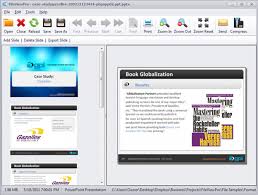FileViewPro is an advanced software tool designed to streamline the way users handle a vast array of file types, including the specialized PEF file format. If you’re dealing with PEF files or other specialized formats, FileViewPro acts as the ultimate tool to solve these challenges. PEF files, which represent Pentax Electronic Files, are RAW image files generated by Pentax digital cameras. These files are highly valued by photographers due to their ability to preserve uncompressed image data, offering greater versatility during post-processing.
However, PEF files are not universally supported by standard software, often necessitating specialized tools to open or edit. FileViewPro fills the gap as the perfect response to this challenge, allowing users to easily access and interact with PEF files without the inconvenience of downloading bulky software or depending on camera-specific applications. One of the standout features of FileViewPro is its ability to keep the integrity and quality of PEF files when they are viewed or converted.
As RAW image files contain an large amount of unprocessed data, having a reliable tool like FileViewPro guarantees that users can access this data without risking quality degradation. With FileViewPro, photographers can view their PEF files in full resolution, enabling them to assess composition, focus, and lighting before moving on to more advanced editing tools. In addition to its comprehensive support for PEF files, FileViewPro offers an intuitive interface that makes operating the software effortless.
Users do not need to be tech-savvy to use the program. Whether you’re opening a PEF file for the first time or handling other formats, FileViewPro’s clean layout and straightforward options make the process easy. This simplicity is particularly useful for those new to RAW photography, as it lessens the learning curve often associated with managing PEF files. Another key feature of FileViewPro is its versatility. While many tools focus exclusively on RAW image formats or a specific brand of camera, FileViewPro broadens its scope to include hundreds of other file types.
This means that users who work with PEF files can also use the software to manage JPEGs, PNGs, and even non-image formats such as PDFs or spreadsheets. This comprehensive method eliminates the need for multiple applications, saving both time and storage space. FileViewPro also is proficient at providing conversion options for PEF files. Users can easily convert PEF files into more universally accepted formats like JPEG or TIFF, making it more convenient to share images or upload them to online platforms.
These conversion features are executed with precision to preserve the original quality of the image, making sure that no detail is lost in the process. For photographers who frequently work with clients or need to distribute images across different channels, this functionality becomes invaluable. For professionals who need efficiency, FileViewPro’s speed is another critical factor. The software what is a PEF file designed to handle even the largest PEF files swiftly, allowing users to open and preview images without delay.
 This rapid performance is a revelation for photographers dealing with high-resolution images or extensive photo libraries. Instead of waiting for files to load, users can quickly inspect their work and make timely decisions on the next steps in their workflow.
This rapid performance is a revelation for photographers dealing with high-resolution images or extensive photo libraries. Instead of waiting for files to load, users can quickly inspect their work and make timely decisions on the next steps in their workflow.
However, PEF files are not universally supported by standard software, often necessitating specialized tools to open or edit. FileViewPro fills the gap as the perfect response to this challenge, allowing users to easily access and interact with PEF files without the inconvenience of downloading bulky software or depending on camera-specific applications. One of the standout features of FileViewPro is its ability to keep the integrity and quality of PEF files when they are viewed or converted.
As RAW image files contain an large amount of unprocessed data, having a reliable tool like FileViewPro guarantees that users can access this data without risking quality degradation. With FileViewPro, photographers can view their PEF files in full resolution, enabling them to assess composition, focus, and lighting before moving on to more advanced editing tools. In addition to its comprehensive support for PEF files, FileViewPro offers an intuitive interface that makes operating the software effortless.
Users do not need to be tech-savvy to use the program. Whether you’re opening a PEF file for the first time or handling other formats, FileViewPro’s clean layout and straightforward options make the process easy. This simplicity is particularly useful for those new to RAW photography, as it lessens the learning curve often associated with managing PEF files. Another key feature of FileViewPro is its versatility. While many tools focus exclusively on RAW image formats or a specific brand of camera, FileViewPro broadens its scope to include hundreds of other file types.
This means that users who work with PEF files can also use the software to manage JPEGs, PNGs, and even non-image formats such as PDFs or spreadsheets. This comprehensive method eliminates the need for multiple applications, saving both time and storage space. FileViewPro also is proficient at providing conversion options for PEF files. Users can easily convert PEF files into more universally accepted formats like JPEG or TIFF, making it more convenient to share images or upload them to online platforms.
These conversion features are executed with precision to preserve the original quality of the image, making sure that no detail is lost in the process. For photographers who frequently work with clients or need to distribute images across different channels, this functionality becomes invaluable. For professionals who need efficiency, FileViewPro’s speed is another critical factor. The software what is a PEF file designed to handle even the largest PEF files swiftly, allowing users to open and preview images without delay.
